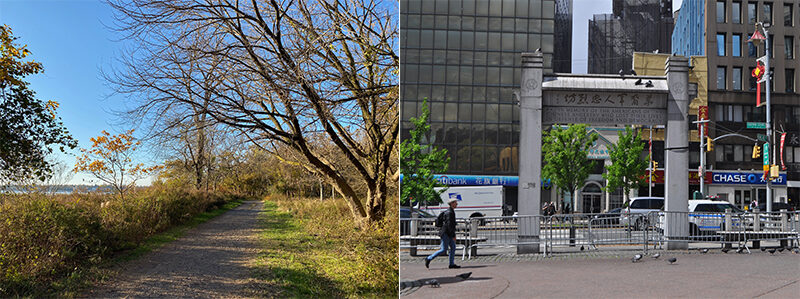Two New Landmarks Celebrate the Diversity of New York City
By Penny Laughlin
In June 2021, the New York City Landmarks Preservation Commission (LPC) designated two new landmarks that specifically recognize Native American and Chinese American history: the Aakawaxung Munahanung (Island Protected from the Wind) Archaeological Site on Staten Island and the Kimlau War Memorial at Kimlau Square in Chinatown.
Aakawaxung Munahanung Archaeological Site
The is associated with more than 8,000 years of occupation by indigenous peoples. The well-preserved site contains the region’s largest known cultural complex, and it is the city’s first landmark to recognize the generations of indigenous peoples who lived here.
The site includes roughly 20 acres of archaeologically sensitive land located within Conference House Park in southern Staten Island. Originally reviewed as the “Conference House Park Archaeological Site,” the new name was identified through LPC research and in consultation with federally recognized tribes in the city. “Aakawaxung Munahanung (Island Protected from the Wind)” comes from the old Munsee language name for Staten Island, which may also have applied to this specific site, based on historic documents.
Kimlau War Memorial
The Kimlau War Memorial commemorates the contributions of Chinese Americans to American history. The public monument is also significant for its architecture and its prominence as a symbolic gateway to Chinatown. The memorial is the first landmark in Chinatown that specifically pays tribute to Chinese American history and culture.
The granite gateway honors Chinese American soldiers who died while serving the U.S. military. Both the arch and plaza are named after Second Lieutenant Benjamin Ralph Kimlau, who lived in Chinatown until he attended the Pennsylvania Military College, graduating in 1942 as the only Chinese American in his class. He died in the South Pacific during World War II, at age 26.
“As part of the agency’s equity framework, I am committed to advancing the designation of landmarks that better represent the city’s diversity and tell the story of all New Yorkers,” said Landmarks Preservation Commission Chair Sarah Carroll in a press release. “The recognition and celebration of the history that these two sites embody is so important, and both are within city parks and accessible for the public to enjoy.”


